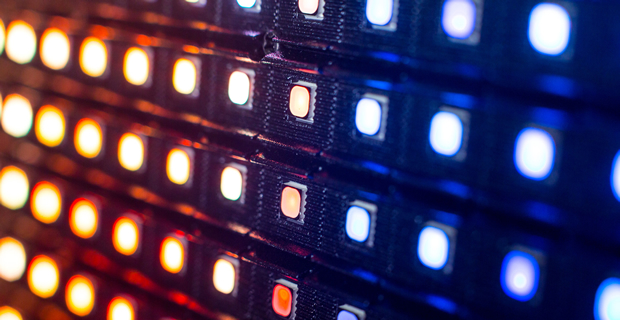Outdoor signage is an important investment for any business, as it is one of the most visible ways to attract customers and promote your products or services. Two popular options for outdoor signage are LED signs and neon signs, and one of the most important considerations for businesses when deciding between the two is cost. In this blog post, we will compare the costs associated with LED and neon signs, and help you determine which one is more affordable for your business.
Initial Costs
When it comes to initial costs, LED signs can be more expensive than neon signs. LED signs use a combination of light-emitting diodes (LEDs) and electronic components to create a bright, energy-efficient display. This technology is typically more complex and expensive than the glass tubes and gases used in neon signs. As a result, LED signs can have a higher upfront cost than neon signs. However, it is also worth mentioning that the cost of LEDs has dropped significantly over the last decade, making them now quite similar to Neon signs.
Energy Efficiency
While LED signs might have a higher initial cost, they can be more cost-effective in the long run due to their energy efficiency. LED signs use less energy than neon signs and have a longer lifespan, which means they will save you money on electricity and replacement costs over time.
According to the Department of Energy, LED signs can use up to 50% less energy than neon signs. This means that over time, the savings on electricity bills can be significant. In addition, LED signs typically have a lifespan of about 100,000 hours, compared to about 20,000 hours for neon signs. This means that you will need to replace your neon sign much more frequently than an LED sign, adding to the cost of ownership.
Maintenance
Both LED signs and neon signs require some maintenance, but LED signs are generally easier to maintain. LED signs use electronic components that can be easily repaired or replaced if they malfunction, while neon signs may require the services of a skilled neon sign maker to fix any issues.
Additionally, neon signs are glass tubes filled with gases, these tubes are fragile and more prone to breaking. If one of the tubes breaks, the entire sign may need to be replaced, adding to the cost of maintenance. In addition, you may need to hire a neon sign repair expert to fix any issues.
Flexibility
LED signs offer more flexibility than neon signs when it comes to design. LED signs can be programmed to display a wide range of colors and patterns, and can be easily updated to display new information. They are also able to display moving images or animations which can be very appealing to customers.
On the other hand, neon signs are limited to the colors of the neon gases used to fill the tubes. While it is possible to create custom designs, the flexibility of neon signs is limited compared to LED signs.
Installation
When installing LED signs, you don’t have to worry about dealing with hazardous gases or fragile glass tubes. LED signs are also considerably lighter than neon signs, making them easier to handle during installation. Furthermore, LED signs are easier to customize, so installation is a less complicated process.
With neon signs, the installation process is more complex. They require a skilled electrician to handle the electrical installation, and a neon sign maker to bend and shape the glass tubes. This can be costly and take longer than installing an LED sign.
Durability
LED signs are known for being more durable than neon signs. They can withstand a variety of weather conditions and are less likely to break or malfunction. Neon signs are more fragile, they can be damaged by extreme temperatures, moisture and other environmental factors.
Conclusion
When it comes to determining whether LED signs or neon signs are more affordable for your business, there are several factors to consider. LED signs can be more expensive initially, but they are more energy-efficient, have a longer lifespan and are easier to maintain. They also offer more flexibility when it comes to design, making them an ideal choice for those who want to showcase unique and dynamic designs. On the other hand, neon signs are cheaper initially, but consume more energy, require more maintenance and are less durable.
When it comes to installation, LED signs are less complicated to install. They are considerably lighter than neon signs, making it less challenging and less time-consuming to install them. Furthermore, they don’t require the use of hazardous gases or fragile glass tubes, which is something to consider as well.
In conclusion, while both LED signs and neon signs have their pros and cons, LED signs are ultimately the more affordable option in the long run. They are energy-efficient, have a longer lifespan, are easier to maintain and have more design flexibility. It’s essential to consider your business’s needs and budget when deciding between LED and neon signs, and to make sure to factor in all costs, including initial cost, energy costs, maintenance costs and durability.

